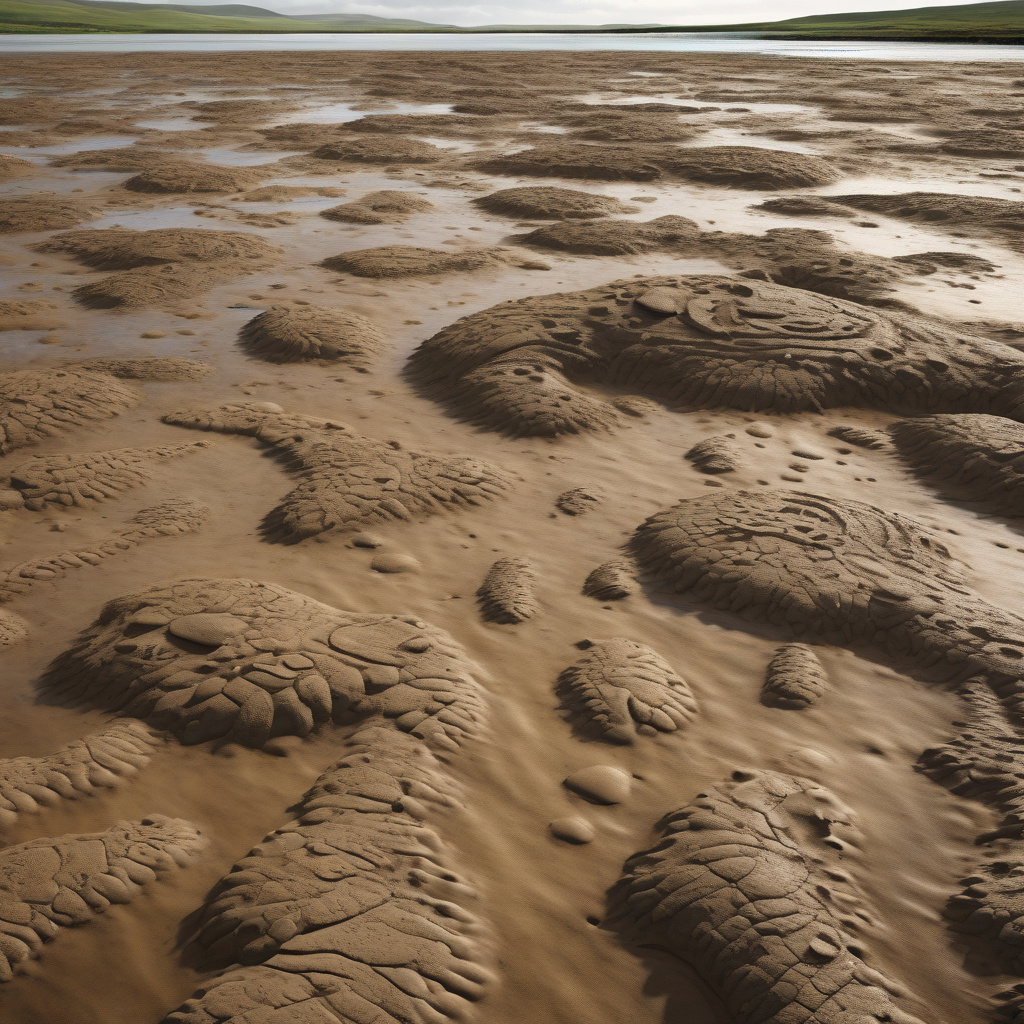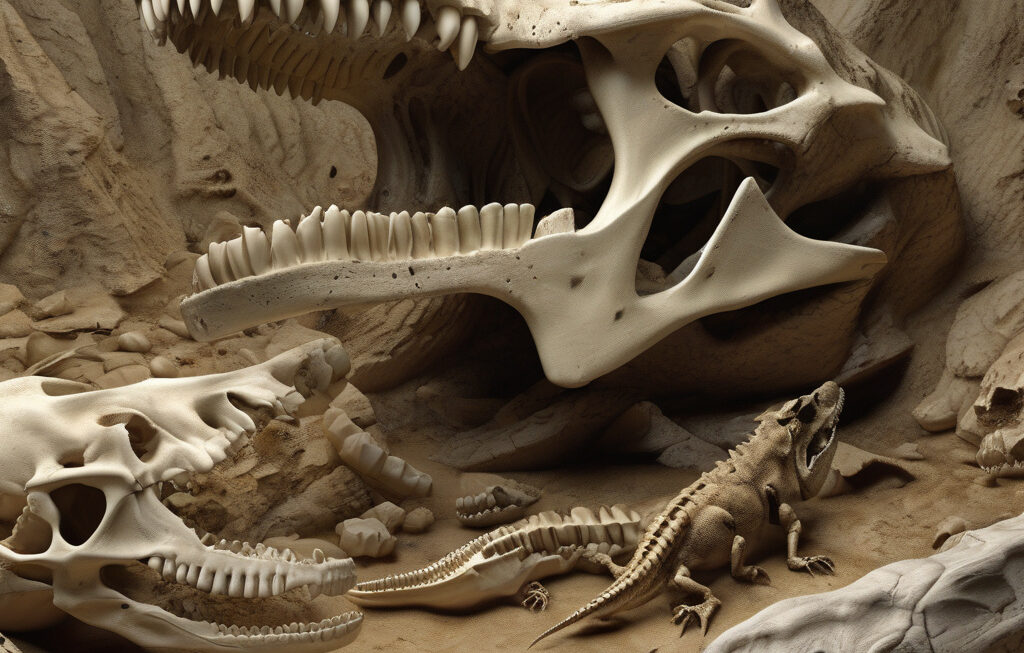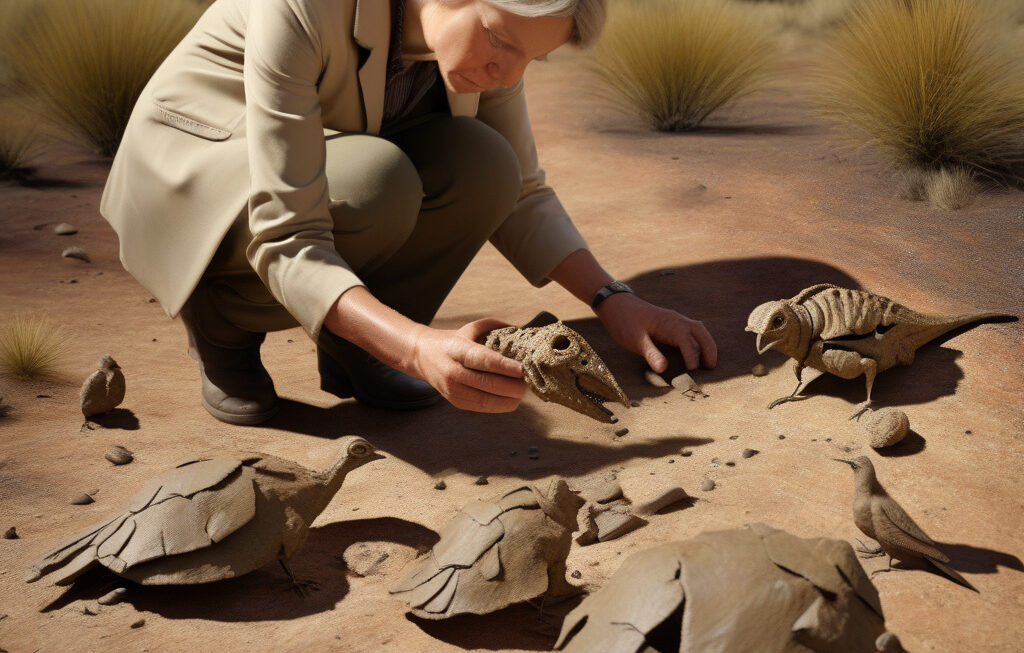Hundreds of 167 Million-Year-Old Dinosaur Footprints Discovered on Scottish Lagoon Site
167 million years ago, dinosaurs strolled through lagoons, leaving behind evidence that has endured through the ages. Recently, in the Isle of Skye, Scotland, a remarkable discovery has been made – hundreds of dinosaur footprints dating back to that prehistoric era have been unearthed, shedding light on the ancient inhabitants of the region.
The footprints, believed to have been left by long-necked sauropods and theropods, provide a rare glimpse into the behaviors and movements of these colossal creatures. Measuring up to two feet in diameter, these tracks offer valuable insights into the size and gait of the dinosaurs that once roamed the Earth.
Paleontologists and researchers are thrilled by the discovery, as it presents a unique opportunity to study the ancient ecosystem of Scotland during the Middle Jurassic period. By analyzing the spacing and arrangement of the footprints, scientists can decipher the speed at which these dinosaurs moved, their interactions with each other, and possibly even their feeding habits.
The Isle of Skye has long been a hotspot for dinosaur discoveries, with previous finds including fossilized bones and teeth. However, the sheer number of footprints found at this particular site is unprecedented, making it a significant breakthrough in the field of paleontology.
The preservation of these footprints over millions of years is nothing short of extraordinary. The combination of the right geological conditions and a bit of luck has allowed these traces of ancient life to survive for millennia, serving as a link between the past and the present.
In addition to their scientific value, these dinosaur footprints also hold cultural significance for the local community and the broader public. They offer a tangible connection to a distant past, sparking curiosity and wonder about the world that existed long before humans walked the Earth.
As technology advances, researchers are able to extract even more information from these ancient footprints. High-resolution 3D scanning and imaging techniques allow for detailed analysis of the tracks, leading to new revelations about dinosaur behavior and anatomy.
The discovery of hundreds of 167 million-year-old dinosaur footprints on the Scottish lagoon site is a testament to the rich history of life on our planet. It reminds us of the incredible diversity of species that have inhabited Earth over millions of years and the importance of preserving and studying these remnants of the past.
In the coming years, scientists will continue to study these footprints, unraveling more mysteries about the dinosaurs that once called Scotland home. Each new discovery brings us closer to understanding the world that existed long before humans, painting a vivid picture of a bygone era dominated by giant reptiles.
This remarkable find serves as a reminder of the enduring legacy of the dinosaurs and the ever-evolving field of paleontology, where each new discovery has the potential to reshape our understanding of the past.
dinosaur, footprints, Scotland, paleontology, discovery












